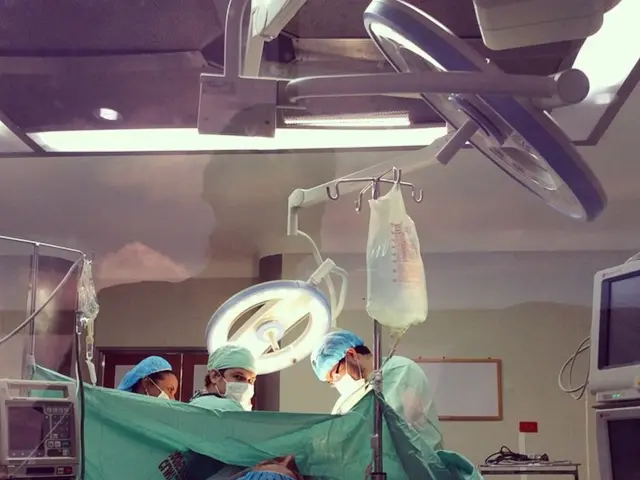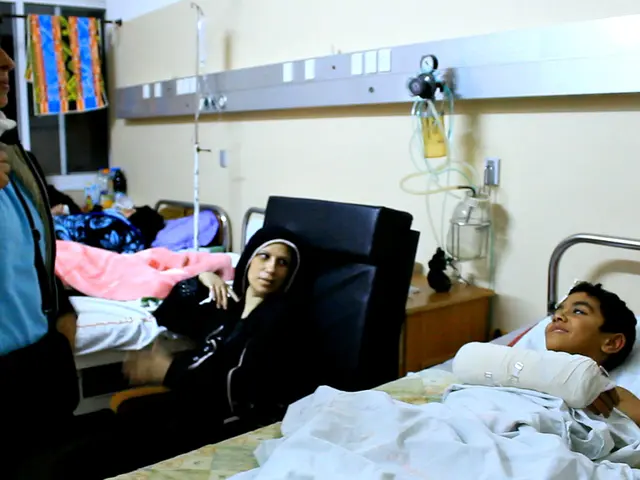Comprehending Langerhans Cell Histiocytosis: A Deep Dive
Langerhans Cell Histiocytosis (LCH), a relatively rare disorder, primarily affects the skin and bones but can involve other organs. This condition, characterised by an abnormal proliferation of Langerhans cells - a type of immune cell - can be challenging to diagnose and treat, as its exact cause remains unclear.
A comprehensive approach is necessary for diagnosing LCH, involving a medical history, physical examination, imaging tests, biopsy, blood tests, and a multidisciplinary approach. Common symptoms include skin lesions, bone pain, respiratory issues, fatigue, and fever. Early recognition of these symptoms can aid in early diagnosis.
Diagnosing LCH typically involves a combination of clinical evaluation, imaging studies, and biopsy. Imaging modalities such as X-rays, CT scans, and MRIs are commonly used, while a biopsy is often necessary for a definitive diagnosis.
LCH can manifest in several forms, including Single-System LCH, Multi-System LCH, and Chronic LCH. The prognosis for patients with LCH can vary widely based on several factors, including age, extent of disease, and response to treatment. Younger patients tend to have a better prognosis compared to older children and adults.
Treatment options for LCH vary based on the type and severity of the disease. For localised disease, observation may be sufficient, while for more severe cases, corticosteroids, chemotherapy, targeted therapy, and medications like vemurafenib may be employed. Surgical intervention may also be necessary to remove tumors or lesions caused by LCH. Radiation therapy may be used in specific situations.
Supportive care is crucial for managing symptoms and improving the quality of life for patients with LCH. Regular follow-up care is essential to monitor for any potential recurrence or late effects of treatment.
Both genetic mutations and environmental factors contribute to the development of LCH. A significant proportion of LCH patients have mutations in the BRAF gene, a key genetic factor. The immune system's status and any underlying immune dysregulation can also influence the development of LCH. For pulmonary LCH, smoking is a well-documented environmental factor that can trigger the accumulation of Langerhans cells in lung tissue, leading to inflammation and damage. Other environmental exposures may also play a role, although these are less well-defined.
Living with LCH can be challenging, especially for those with multi-system involvement. Support from healthcare providers, family, and support groups can be invaluable. Being aware of the symptoms associated with LCH can aid in early diagnosis, leading to earlier and more effective treatment.
The overall survival rate for patients with LCH is relatively high, especially for those with localised disease. With a better understanding of this condition and ongoing research, the prognosis for patients with LCH continues to improve.
[1] Krause, D., & Kollmannsberger, C. (2018). Langerhans Cell Histiocytosis. In StatPearls [Internet]. Treasure Island (FL): StatPearls Publishing. [2] National Organization for Rare Disorders. (2021). Langerhans Cell Histiocytosis. Retrieved from https://rarediseases.org/rare-diseases/langerhans-cell-histiocytosis/ [3] Mayo Clinic. (2021). Langerhans Cell Histiocytosis. Retrieved from https://www.mayoclinic.org/diseases-conditions/langerhans-cell-histiocytosis/symptoms-causes/syc-20354757
- In the realm of health-and-wellness,science plays a crucial role in understanding and addressing medical-conditions, such as Langerhans Cell Histiocytosis (LCH), a neurological-disorder primarily affecting the skin and bones but which can also involve other organs.
- Linking LCH to skin-conditions, it's important to note that common symptoms include various skin lesions, and a comprehensive diagnosis often involves a multidisciplinary approach integrating science, medical history, physical examination, imaging tests, biopsy, and blood tests.




